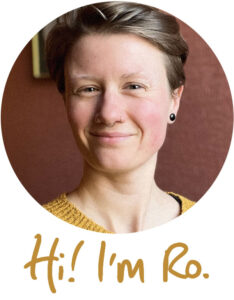How To Say No (After Saying Yes)

Do you ever end up in a situation where you’ve agreed to something that isn’t feeling good any more? Maybe you said yes because you thought it’s what you wanted, or because you thought it’s what the other person wanted. Maybe you didn’t want to cause an argument or upset anyone.
Now, however, you’re realising that your body doesn’t feel great about that decision. It’s more than you’re willing or able to tolerate, and you know you’re no longer a ‘yes.’ Perhaps you’ve been working on being more clear in your communication, and you don’t want to ignore those signs any more.
For people who have been socialised not to upset or cause conflict (that’s loads of us, by the way) it can be really tricky to navigate changing your mind and saying no. It can trigger all sorts of stories about being unreliable, letting the other person down, being difficult or ‘too much.’ In reality, being able to communicate what’s really going on for us, in a compassionate, clear, and honest way, is a crucial skill in maintaining healthy boundaries.
Let’s break down how you can get better at saying no.
Give yourself permission to say no
First of all, check in with yourself: do you believe that you have the right to change your mind?
Imagine a situation where you’ve said yes to someone you care about, and then you later realise you need to tell them it’s a no. Visualise this in as much detail as you can: what was happening, what you both said, how you felt. How did you know you’d changed your mind, or not given an honest answer? What thoughts or feelings come up for you when you consider the possibility of telling them that you’ve changed your mind?
This can be a good exercise to try with any self-reflective practices you have, such as meditation or journaling. Try writing down or reflecting on anything that comes up for you here: what are you afraid of? What emotions do you feel? Do you feel any bodily sensations? Do these things feel familiar from anywhere else?
These clues are all great information to finding out why you might find it hard to say no. Awareness of these patterns is the first step to overcoming them.
Check that you feel safe to say no to this person
If you’re reading this, then saying no and changing your mind likely feels pretty vulnerable to you. So if it’s something you want to practice getting better at, I’d recommend doing so with someone you feel safe with, first of all. This could be anyone – a friend, partner, family member, or a therapist or coach.
Chances are that saying no only feels difficult to you in certain contexts. Maybe it’s harder with someone you’re really into who you’ve only been dating a short while, or maybe it’s not an issue at all until your relationship starts feeling more committed.
Spend a little time feeling into who you feel most challenged to say no with, and who it might feel easier to practice with. If you’re feeling really brave, you can even have a conversation with the person you feel safest with, and tell them you’re practicing getting better at saying no and changing your mind. Having the accountability and support of someone who you trust can be a huge help.
Find the right words
Once you’re clearer on why you find it hard to change your mind, and you’ve identified one or two people you might feel safe to practice with, it’s time to give it a try!
Speaking your vulnerability can be a really helpful way in. If you’ve done a little reflection and you know what you’re afraid of, why not say it out loud with someone you trust?
“I’m nervous to say this because I’m telling myself you’ll think I’m unreliable… but I’ve changed my mind. Can we do X instead?”
“I’d really like to try something different, can we do that? It might sound irrational but I’m scared to say this because I don’t want to upset you.”
Did you notice what else happened here? In the sentences above, we’ve also acknowledged that the fear is irrational, it’s something you’re telling yourself. It’s a story. It’s not the truth. Changing your mind is something you always have the right to do, and the fears that come up in response are not rational ones – they are old trauma responses with roots that likely go all the way back to childhood.
You can also ask for reassurance that your fears are not true, if that’s helpful:
“This feels quite vulnerable to say because I have a story that you’ll think I’m too much… but I’ve changed my mind and I’d like to do something else. Can you reassure me that’s ok?”
When you speak your fear out loud in this way, while acknowledging that it’s a story and not the truth, you take away so much of its power. You also help to create more intimacy with the other person by sharing a little of your vulnerability with them.
And this is the most amazing thing of all: learning how to take a situation that feels scary, and turn it into an opportunity to overcome some of your own fear – while deepening your connection with the other person too.



